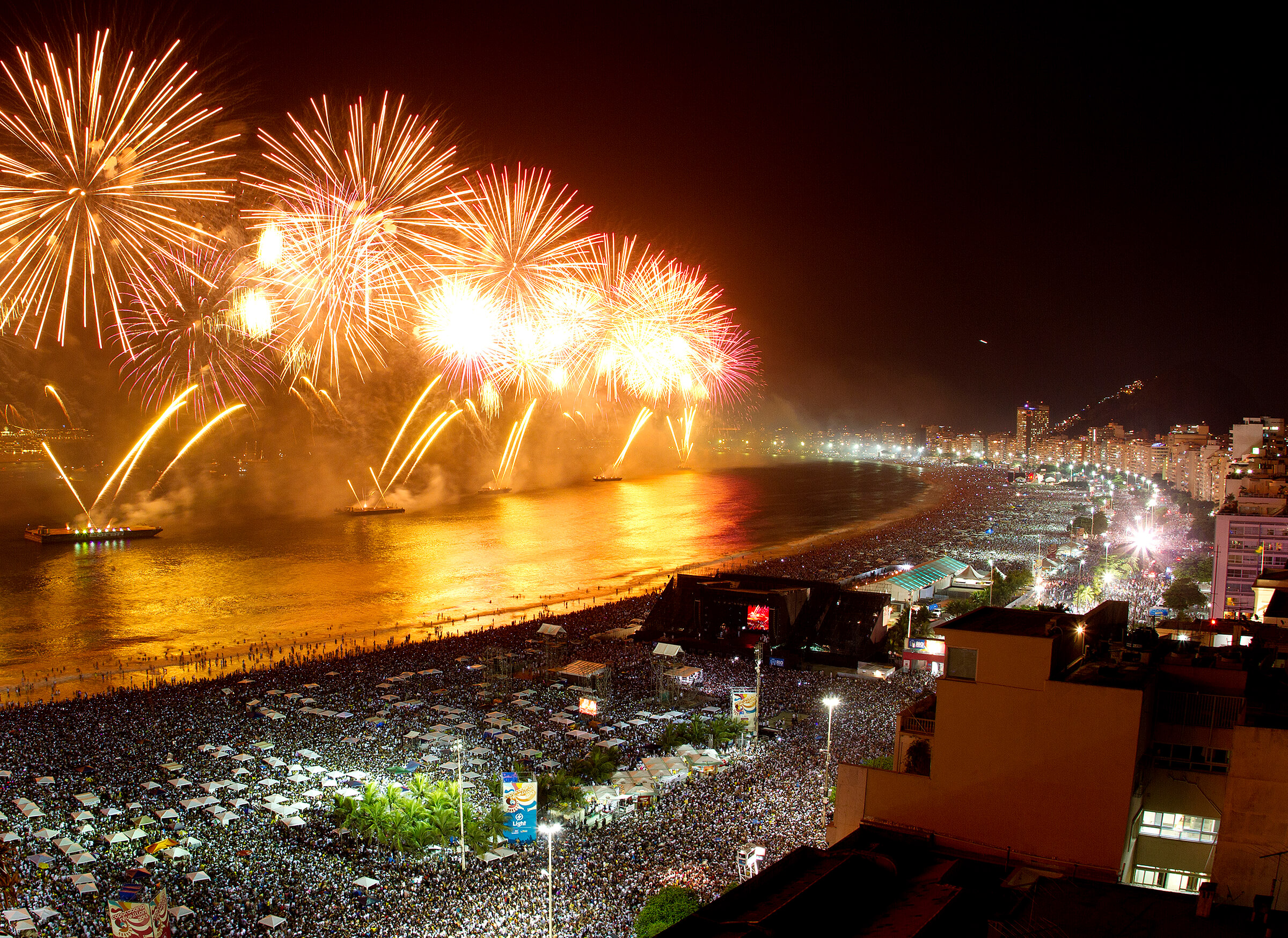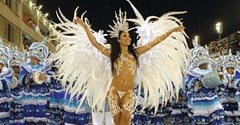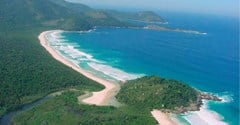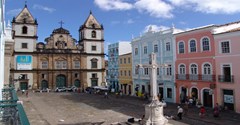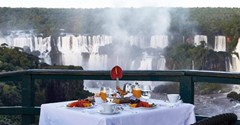Planning a holiday to Brazil? Consult our calendar of cultural festivals and events which you might like to coincide your visit with.
Coinciding your visit to one of Brazil's cities or towns with a cultural festival or event is a wonderful way to gain extra value out of your time here, enjoying unique perspectives on local culture, beliefs and customs. A palpable atmosphere and togetherness is often experienced and those with an adventurous spirit and an open mind can create special memories filled with colour, excitement, rhythmic live music and shared joy.
Doing so will often mean visiting at a time when numbers swell and the centres become much busier and louder than normal, hotels can be both slightly more expensive and harder to come by at short notice, but if you are willing to embrace the true spirit of the occasion and plan far enough in advance, these are relatively small prices to pay.
Let's have a look at our selection of the best cultural festivals and events in Brazil and how you can experience them.
Festa do Bonfim & Washing of the steps, Salvador
When: Second Thursday after Three Kings Day (6th January)
Salvador is one of Brazil's most culturally-rich cities, where a unique blend of African and Portuguese heritage has been infused with Brazilian flair and creativity. This richness, together with Salvador's coastal location and the vibrancy encapsulated in the central Pelourinho district, make it an extremely popular travel destination in Brazil.
One of the very best times to visit Salvador is in January or early February, when the city celebrates the Festa do Bonfim and with carnival just around the corner. The Bonfim Church, which plays a central role in the festivities, occupies a special place in the hearts of Baianos (those from the state of Bahia). Locals hang ex-votos from the ceiling in the form of body parts - a sign of thanks for the divine intervention enjoyed during the recuperation of their limbs. Pilgrims and visitors often also take part in the fitas custom, entrusting their dreams to brightly coloured ribbons handed out here and either tying them to their wrists or adding them to the colourful mass adorning the entrance to the church.
On the second Thursday after Three Kings Day (6th January) an 8km procession leads through the streets of Salvador from Conceição da Praia Church, followed by locals traditionally dressed in white in honour of the Candomblé deity Oxalá. Upon reaching the Bonfim Church a group of Baianas ceremonially wash the steps with blessed water amid chants and dances in the sacred Lavagem do Bonfim.
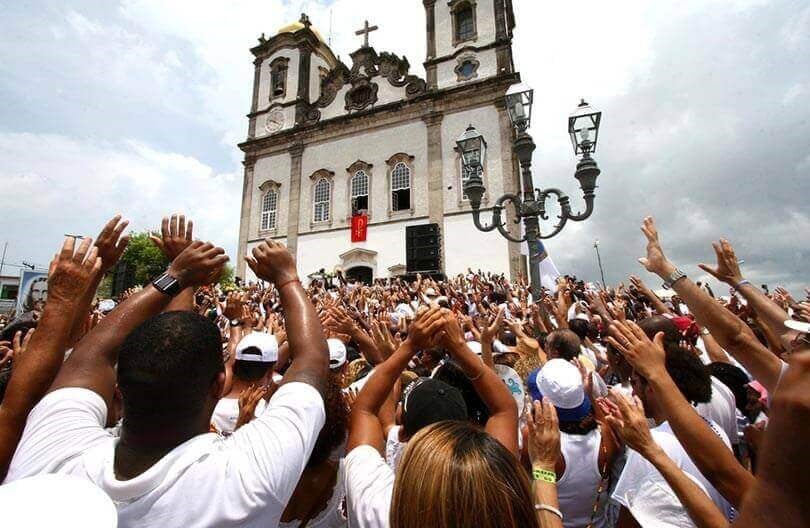
Festa do Bonfim (Photo by FotosGOVBA)
Carnival, Rio de Janeiro & Salvador
When: Mid-February
The world's biggest and most spectacular carnival takes place in Rio de Janeiro each February, as the famous beaches and iconic sights are cast into a supporting role for the epic parades and jubilant street parties. At its heart, the Rio Carnival is actually a fiercely contested competition between professional samba schools, the cream of which are given the opportunity to parade through the 90,000 capacity Sambadrome in a battle to be crowned champion. Enormous floats form the centrepieces of the parades, surrounded by Cariocas in colourful costumes, dancing to the beat of infectious live samba music and watched on by a euphoric crowd, soaking in and amplifying this truly unique spectacle. Attending the Rio Carnival can provide you with a front row seat in the frisas which line the runway, or perhaps a place among the locals or fellow travellers higher up in the heart of the stands. Wherever you choose to sit, the intense sights and sounds of the Sambadrome will never fade.
Sample Rio Carnival Itinerary with Iguassu Falls
The carnival in Salvador is a much more participatory affair - a fundamentally different experience to that enjoyed in Rio (though we can arrange for you to take part in the Rio parades). One should go to Salvador with good stamina, an adventurous spirit and a desire to immerse yourself in the party atmosphere.
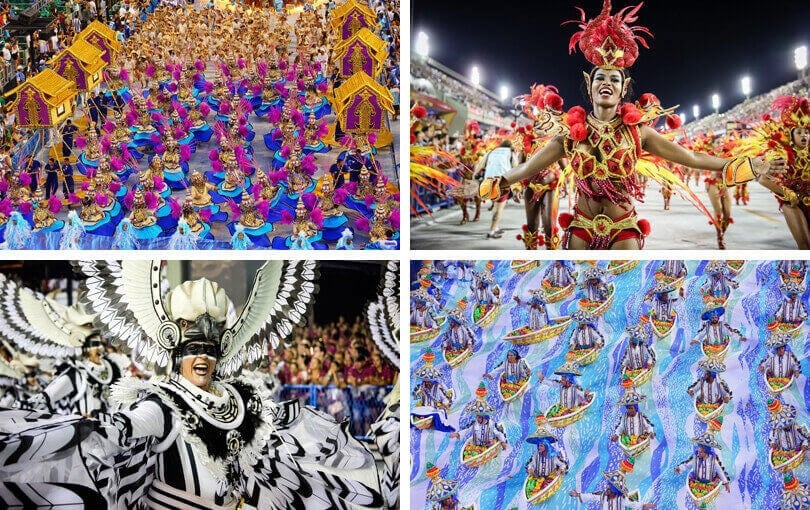
Semana Santa, Ouro Preto
When: Palm Sunday to Easter Sunday
Celebrated in cities throughout Latin America, Semana Santa (Holy Week) is the most important Catholic event of the calendar for many countries, including Brazil. The week marks the period between Palm Sunday and Easter Sunday and tells the story of the Passion of Christ as he passes through different stages of his life and death. Attending the Semana Santa not only allows access to some colourful and spectacular processions and decorations, but also is a window into the religious side of Brazil and the intensity of the beliefs here.
The best place to attend Semana Santa in Brazil is Ouro Preto, the largest of the historic cities of the Minas Gerais region so intrinsically linked with the Brazilian Gold Rush era. The small city is one of the most picturesque in the country, with attractive colonial houses and buildings lining the cobbled steps, dwarfed by the towers of the city's collection of magnificent baroque churches, themselves enriched by the artwork of Brazil's celebrated sculptor; Aleijadinho. One of the highlights of the celebrations here are the beautiful sawdust carpets which stretch out through the streets, depicting religious scenes and which provide the path for the parades to follow.
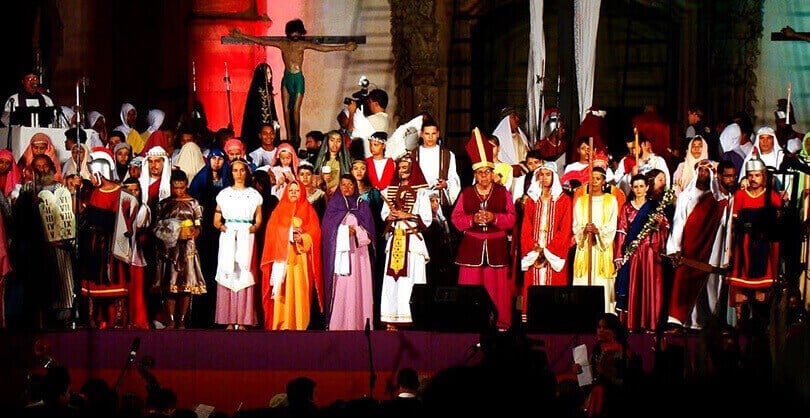
Amazonas Festival of Opera, Manaus
When: April & May
The historic port city of Manaus was once one of the richest and most extravagant in all of Latin America, thanks to its booming rubber production industry. Today, it is a large city which acts as the gateway to the Brazilian Amazon Rainforest, but traces of the splendour of yesteryear can be found, not least in the form of the magnificent Teatro Amazonas.
Built with the riches of the rubber boom and designed in the Belle Epoque style, the theatre is the defining symbol of Manaus and the focal point of the annual Amazonas Opera Festival. For a few weeks each April and May, some of the globe's finest opera performers and ballet dances venture into the Amazon, wowing crowds with unforgettable performances, each of which further enrich the legendary status of this special venue and transport you back to its heyday.
This time of year is also a wonderful time to embark on an expedition cruise into the Brazilian Amazon. Water levels remain high following the rainy season and glacial melt up in the Peruvian Andes, and so you will also be able to experience the extraordinary flooded forests, as well as another great natural phenomenon; the Meeting of the Waters.
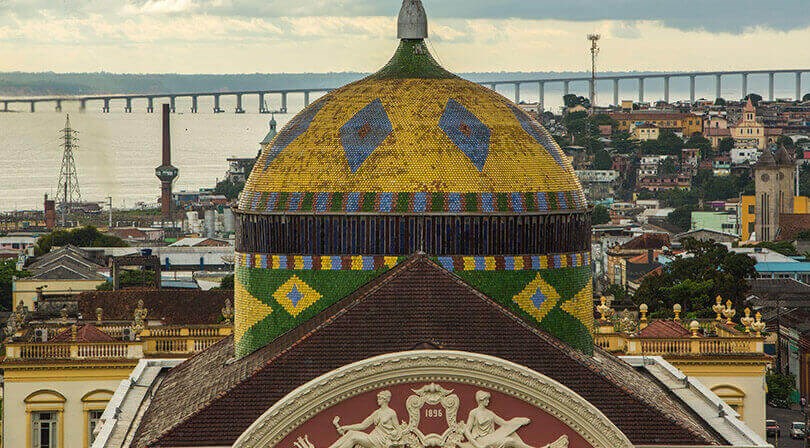
Teatro Amazonas in Manaus (photo by VisitBrasil)
Festa Junina, Northern Brazil
When: Throughout June
Taking place in cities up and down the north coast of Brazil, the June Festivals are the largest celebrations in Brazil after the Carnival and the biggest and most spectacular cultural event in the country. The festivities celebrate agricultural life, praying to three central saints for bountiful harvests and paying thanks for past abundance.
Each region varies their celebrations slightly, but wherever you experience the June Festivals, you will enjoy an intimate insight into the rich culture of the north through live music, local dance forms, firework displays and regional customs. Among the latter, the Bumba Meu Boi tradition of São Luís is one of the best known (as experienced my Michael Palin). The story is centred around an expectant mother called Catrina and her illicit lover Mateus - a slave owned by his partner's father. Mateus sets out to procure an ox tongue, for which Catrina has developed a sudden craving, fearing for the well-being of his unborn baby should he fail. He returns tongue in hand, but unfortuantely for him the victim just happened to be an ox belonging to the now furious father of Catrina's. To save poor Mateus from his vengeance, a priest and a group of local people slowly coax the ox back to life with prayers and a very Brazilian drum beat.
The June Festivals are a wonderful reason to explore some of the lesser-visited parts of Northern Brazil in conjunction with Rio de Janeiro and perhaps Salvador (which has its own celebrations). Some of the best places to attend the June Festivals are the aforementioned São Luís (from where you can venture into the white sand dunes of Lençóis Maranhenses) and the dynamic coastal city of Recife, close to some excellent beaches and the beautiful colonial town of Olinda.
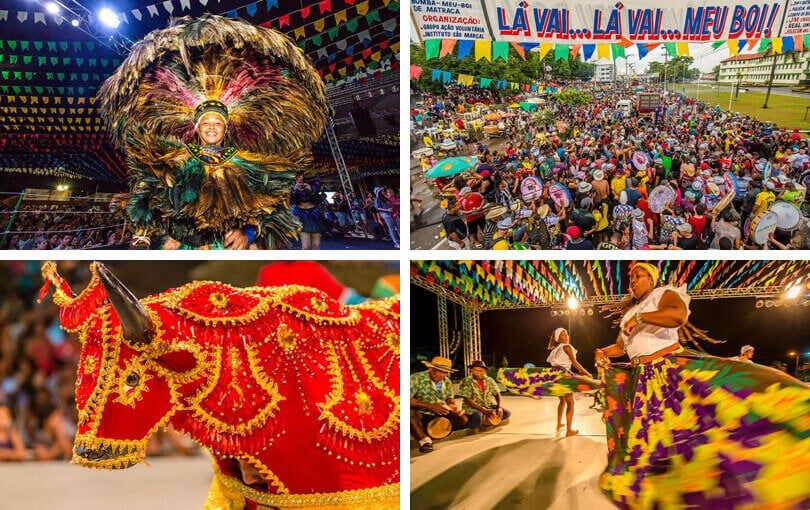
Brazil's June Festival celebrations (photos by VisitBrasil)
Festival de Cachaça, Paraty
When: August
Just a couple of hours by road from Rio de JaneIro or Sao Paulo, the former pirate hideout of Paraty welcomes its visitors with golden jungle-fringed beaches on which to stroll, tree-covered hills through which to hike, crystal-clear waters in which to snorkel and swim and picturesque cobbled streets, lined with picture-perfect colonial buildings.
It is a laid-back and quiet town for most of the year, but comes alive for a weekend with the annual Cachaça festival in August. Also known as the Festival de Pinga, the celebrations are dedicated to Brazil's national sugar cane liquor. Along with the chances to sample different varieties of cachaça and the associated festive atmosphere that comes with it, the weekend is also a great chance to experience some typically Brazilian samba and forró dancing and try some national dishes. A few days in Paraty make a great addition to your time in Rio de Janeiro, and for those looking to get involved in the local culture and party spirit, the festival is a great time to visit.
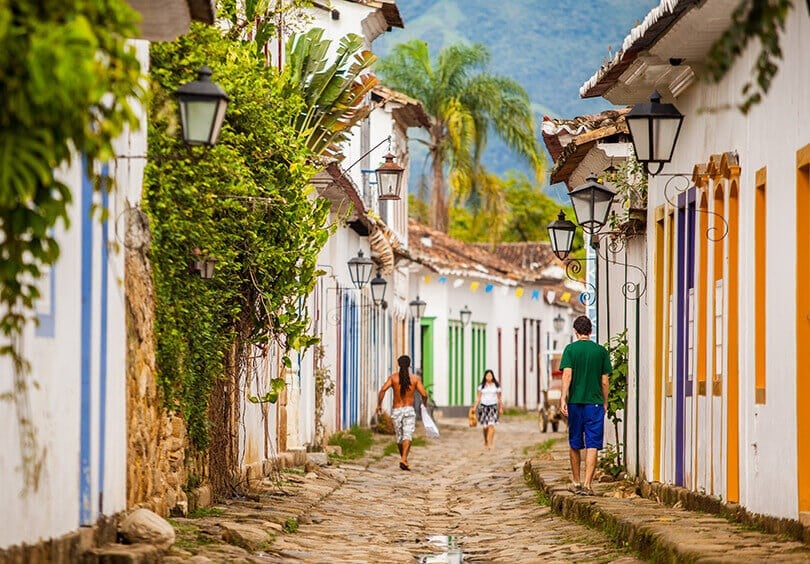
Cobbled streets of Paraty (Photo by VisitBrasil)
Oktoberfest, Blumenau
When: Early to mid-October
Every October the small town of Blumenau becomes a little corner of Bavaria near Brazil's Southern Atlantic coast. The festival is a link to the town's 19th century Germanic roots, when a large European community settled here and it could easily be mistaken for a German town with a glance at the architecture still found here.
Surrounded by coastal forest, Blumenau springs into life for eighteen days as around 700,000 people take part in the celebrations, which include marching bands, folk dancing, parties and the crowning of the Queen of Oktoberfest. Large mugs of Bavarian beer and plates of traditional Germanic cuisine are consumed by locals and travellers alike and a friendly and festive atmosphere reigns.
Thought to be the second biggest beer festival in the world, the 2018 Blumenau Oktoberfest takes place between 3rd and 21st October. The town can be reached as part of the spectacular Serra Verde train journey, taking you through the heart of the magnificent Serra Verde mountains on a panoramic journey from Curitiba to Morretes.
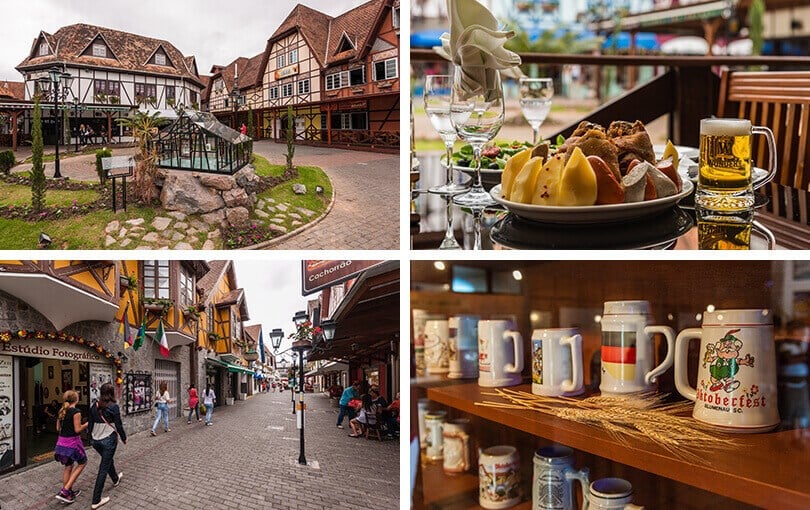
Blumenau's Germanic heritage (Photos by VisitBrasil)
Brazilian Grand Prix, Sao Paulo
When: Early or mid-November
Brazil's love of Formula One has grown out of the success of past multiple world champions Emerson Fittipaldi, Nelson Piquet and Ayrton Senna, the magnetic charisma and daring driving style of the latter in particular. The retirement of Felipe Massa, pipped to the title at the dramatic 2008 Brazilian Grand Prix by Britain's Lewis Hamilton, means that the country faces an uncertain future, with no drivers likely to be on the grid from 2018.
The last few corners of the 2008 season were among the most dramatic in the history of F1 and indeed of the Brazilian Grand Prix. Interlagos in Sao Paulo is a rare anti-clockwise track, known for its high speed banking and overtaking opportunities and its current position as the penultimate race mean that the races are often as important as they are entertaining.
The 2018 Brazilian Grand Prix is scheduled to take place on 9th to 11th November, two weeks before the season closes in Abu Dhabi. The city can be reached via direct flights with British Airways and you can easily combine your trip with a visit to see the iconic sights and beaches of Rio de Janeiro, experience the unique Afro-Caribbean culture of exotic Salvador or perhaps explore some of Brazil's natural wonders, such as the biodiverse Amazon Rainforest, the breathtaking Iguassu Falls or the Pantanal wetlands - the realm of the jaguar.
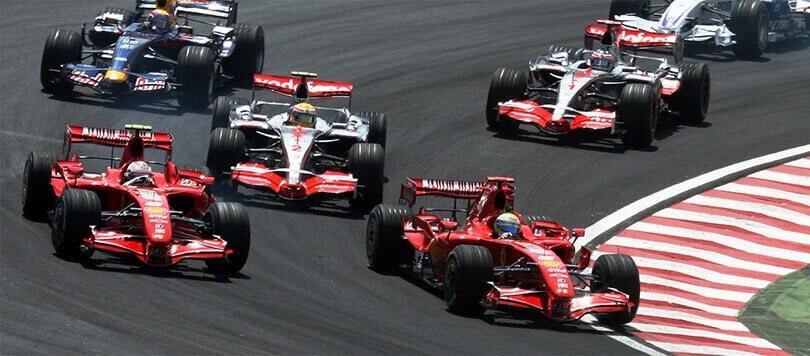
Brazilian Grand Prix (photo by Morio)
Reveillon, Rio de Janeiro
When: 31st December
Aside from Carnival, the period around New Year's Eve is one of the busiest and most expensive times to be in Rio. However, those that do choose to see in the new year in the Marvellous City will be rewarded with a spot in one of the biggest parties taking place anywhere on earth that night, with a distinctly family feel. There is perhaps no better way to truly immerse yourself in the famous Carioca spirit than to share this memorable night in the company of the city's inhabitants.
Reveillon is centred around the famous Copacabana beaches, where Cariocas gather to share food with family and friends and then, as the evening progresses, enjoy live music gigs, samba dancing and the spectacular firework display over the Atlantic Ocean. The festival is not just a mere excuse to party, not that Brazilians need one, it is actually a religious affair; it is rooted in Candomblé beliefs and thanks are given to Iemanjá, the Goddess and protector of the sea. It is for this reason that many locals dress in all white for the night. The following day, on 1st January, you will also see many Cariocas offering gifts to the Goddess by tossing them into the sea.
See a sample itinerary to spend New Years Eve in Rio de Janeiro
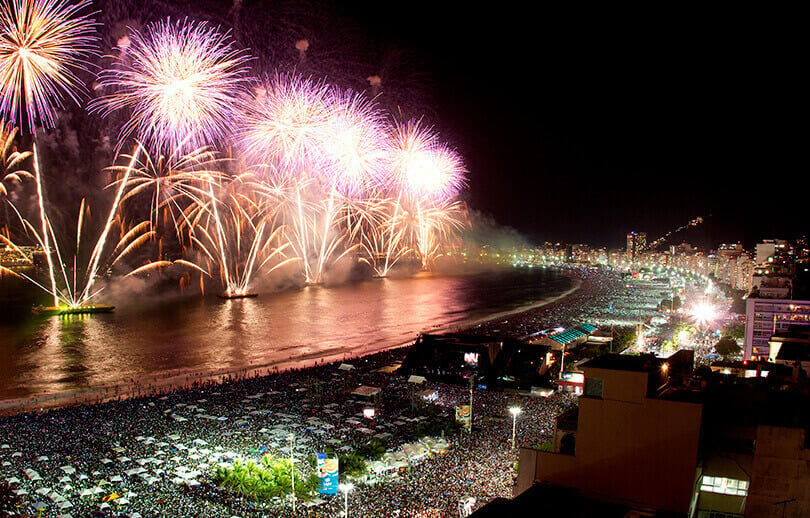
Fireworks over Copacabana, Rio de Janeiro (Photo by VisitBrasil)
Choose your perfect holiday
Find inspiration from our selection of itinerary suggestions, a great starting point for your next trip
View More Tours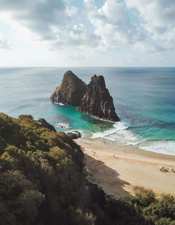
Stay in touch
Infuse your travels, with inspiration from our monthly newsletter.
READY - 20 April 2024
LANDMARK TOURS: Multi-Country & Cross Continent. New Cosmopolitan Tour: Buenos Aires, Iguazu, Rio
CHINA & INDIA: Local Life, People & Unique Cultures
GUIDES by Veloso Tours, are the best Local Hosts
PRIVATE VILLAS: Quality Time in exclusive settings
TRAVEL INSURANCE with extensive COVID-19 cover
